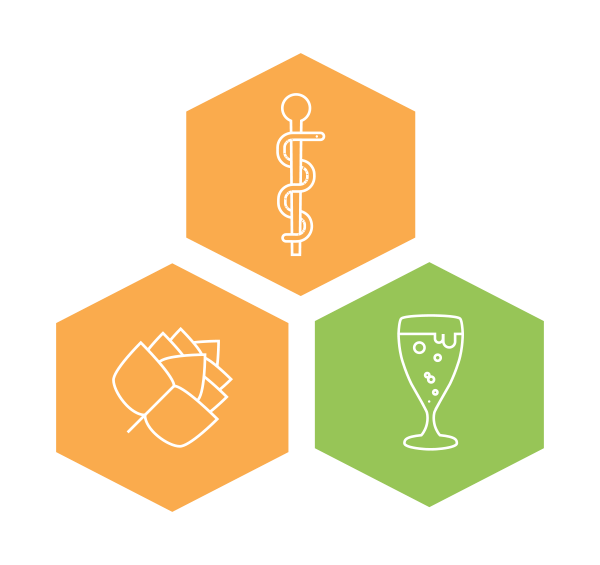Organising Committee
9th European Beer and Health SymposiumDr. Simona Costanzo

Costanzo Simona
Simona Costanzo, Augusto Di Castelnuovo, Giovanni de Gaetano.
Department of Epidemiology and Prevention.
IRCCS Neuromed. Pozzilli, Italy.
Our research group at the Department of Epidemiology and Prevention, IRCCS Neuromed (Italy) has been working in the last 20 years on the effects of alcohol consumption on health. We performed several meta-analyses of observational studies to investigate the effect of alcohol intake at different doses on total mortality and on fatal and not-fatal cardiovascular events, both in apparently healthy people and in CVD patients. Main results from these meta-analyses showed that low intake of wine and beer is associated with a reduced cardiovascular and total mortality risk, whereas larger amounts with an increased risk. We strongly believe that experts should accurately communicate the health benefits and risks of alcohol consumption to the media and to the public. Nowadays, the debated question on the existence of a J shaped curve – an issue frequently discussed even in scientific forums – is a problem of beliefs rather than of scientific data. At this time, while physicians and public policy makers wait for a long-term clinical trial to finally provide solid answers to the controversies surrounding moderate alcohol intake, considering the currently available epidemiological evidence, we reiterate four key messages: (1) the choice to consume alcohol should be made on an individual basis, taking into account both its influence on health and individual’s specific risk profile; (2) the hazards of even occasional binge drinking should be highlighted and reinforced; (3) moderate drinking should only occur in the context of an otherwise healthy lifestyle; (4) lifelong abstainers should not adopt drinking only to improve their health.
Abstract
Moderate alcohol consumption and lower total mortality risk: justified doubts or established facts.
A J-shaped curve is often used to describe the relationship between alcohol consumption and total mortality. The accepted interpretation of the J-shaped curve relating alcohol intake to mortality is that the lowest points on the curve (corresponding in several reports and meta-analyses to the light-to-moderate drinking category: one to two drinks per day) represent the range of optimum exposure to alcohol, while the increased risk in non-drinkers or heavy drinkers reflects the consequence of sub-optimal exposure.
The debated question on the real existence of a J shaped curve – an issue frequently discussed even in scientific forums – is often a problem of beliefs rather than of scientific data. Moreover, prominence is often given to the hypothesis that the well documented J-curve relationship of lower risk of mortality with light-to-moderate alcohol intake might be due to a misclassification of drinking patterns. It has been suggested that the higher risk among abstainers may have been due to the inclusion of high-risk subjects who had become abstainers. As a consequence, some public Organizations insist on considering alcohol to be harmful even when it is consumed in light amounts (“zero tolerance”).
At this time, while physicians and public policy makers wait for a long-term clinical trial to finally provide solid answers to the controversies surrounding moderate alcohol intake, and considering the currently available epidemiological evidence, four key messages should be reiterated:
- The choice to consume alcohol should be made on an individual basis, taking into account both its influence on wellbeing and individual’s specific health risk profile.
- The hazards of even occasional heavy or binge drinking should be highlighted and reinforced.
- Moderate drinking should only occur in the context of an otherwise healthy lifestyle and at appropriate occasions, such as with meals and only after activities that require concentration, skill or coordination.
- Lifelong abstainers should not adopt drinking solely to improve their health.

